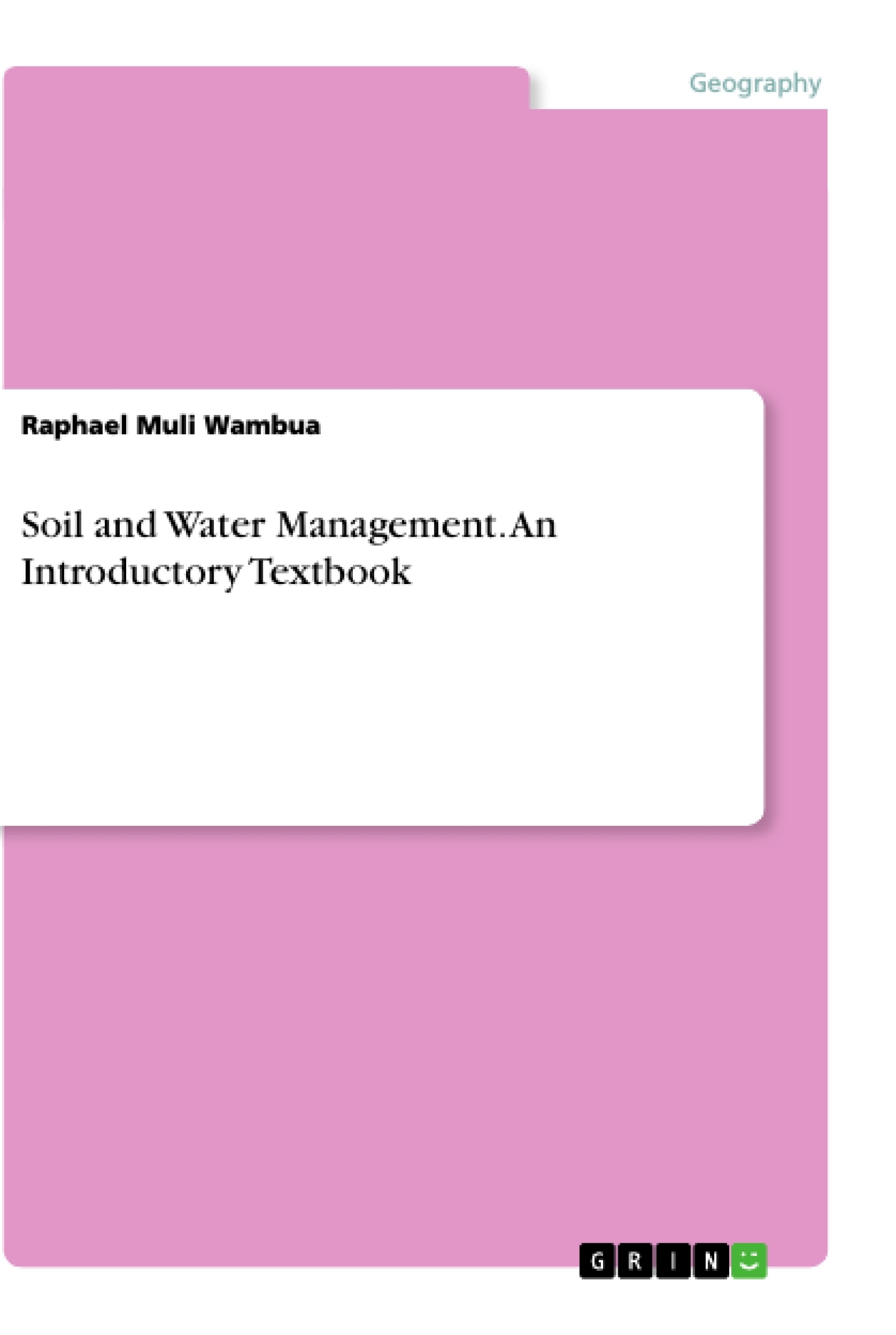Soil and Water Management is a text book intended for students and instructors in University or higher education for Certificate, Diploma and Degree students in a number of courses such as General Agriculture, Agricultural Education and Extension, Horticulture and other allied professions.
The content of the text book has been presented in a coherent format, arranged in an explicit style that adheres to University and higher education curriculum. The textbook is partitioned into section A and section B with Review questions at the end to explicitly help the trainees comprehend the topics. This makes the book suitable for easy reading. For the calculations, worked examples have been solved in a way of illustration and details are presented. Each chapter of the book has worked examples for the readers to expound on subject knowledge.
Table of Contents
- Section A: Soil Management
- Section B: Water Management
Objectives and Key Themes
This textbook aims to provide a comprehensive understanding of soil and water management principles for students and professionals in agriculture and related fields. It seeks to bridge the gap between theoretical knowledge and practical application, equipping readers with the skills to contribute to improved food security.
- Soil conservation and management techniques
- Water resource management and irrigation
- Sustainable agricultural practices
- Improved food security through effective soil and water management
- Application of soil and water management principles in various agricultural settings
Chapter Summaries
Section A: Soil Management: This section delves into the crucial aspects of soil management, covering various techniques and principles to optimize soil health and productivity. It likely explores soil conservation methods, nutrient management strategies, and the impact of different agricultural practices on soil quality. The section likely emphasizes the importance of sustainable soil management for long-term agricultural viability and food security. Worked examples and review questions are incorporated to enhance comprehension and application of the concepts.
Section B: Water Management: This section focuses on the efficient and sustainable use of water resources in agriculture. It likely covers various irrigation methods, water conservation strategies, and the impact of water management practices on crop yields and overall agricultural productivity. The section likely emphasizes the importance of water resource management in the context of increasing water scarcity and the need for sustainable agricultural practices. Worked examples and review questions likely reinforce the learning process.
Keywords
Soil management, water management, irrigation, soil conservation, sustainable agriculture, food security, agricultural practices, water resources, nutrient management.
Frequently Asked Questions: A Comprehensive Guide to Soil and Water Management
What is the overall purpose of this textbook?
This textbook aims to provide a comprehensive understanding of soil and water management principles for students and professionals in agriculture and related fields. It bridges the gap between theory and practice, equipping readers with skills to improve food security.
What are the main sections covered in this textbook?
The textbook is divided into two main sections: Section A focuses on Soil Management, while Section B focuses on Water Management. Each section explores various techniques and principles related to its respective topic.
What topics are covered in Section A: Soil Management?
Section A delves into crucial aspects of soil management, including soil conservation methods, nutrient management strategies, and the impact of agricultural practices on soil quality. It emphasizes sustainable soil management for long-term agricultural viability and food security. Worked examples and review questions are included.
What topics are covered in Section B: Water Management?
Section B concentrates on the efficient and sustainable use of water resources in agriculture. This includes various irrigation methods, water conservation strategies, and the impact of water management on crop yields and overall agricultural productivity. The section highlights the importance of water resource management given increasing water scarcity and the need for sustainable practices. Worked examples and review questions are included.
What are the key themes explored throughout the textbook?
Key themes include soil conservation and management techniques, water resource management and irrigation, sustainable agricultural practices, improved food security through effective soil and water management, and the application of these principles in various agricultural settings.
What are the key words associated with this textbook?
Key words include: Soil management, water management, irrigation, soil conservation, sustainable agriculture, food security, agricultural practices, water resources, and nutrient management.
What type of audience is this textbook intended for?
This textbook is designed for students and professionals in agriculture and related fields.
Does the textbook include practice exercises?
Yes, the textbook incorporates worked examples and review questions to enhance comprehension and application of the concepts in both soil and water management sections.
- Quote paper
- Dr Raphael Muli Wambua (Author), 2020, Soil and Water Management. An Introductory Textbook, Munich, GRIN Verlag, https://www.grin.com/document/920144




